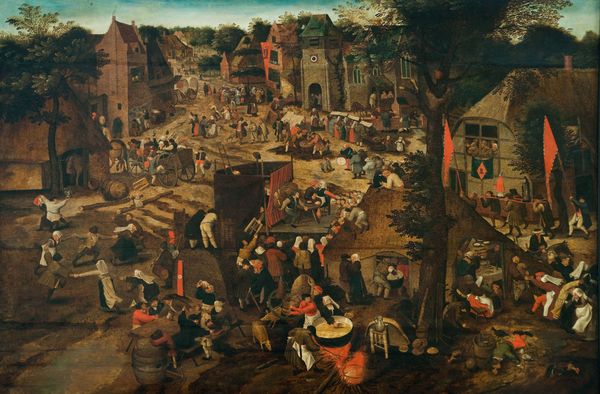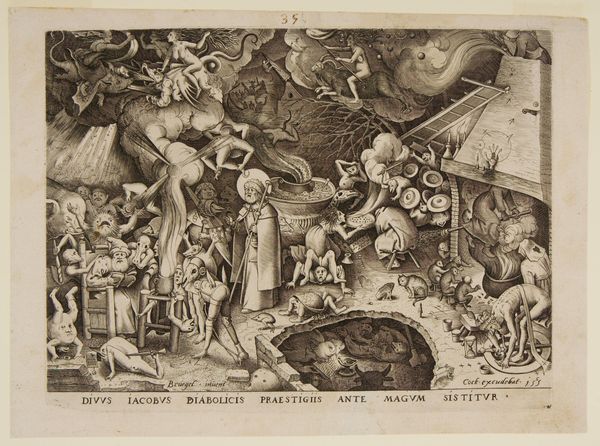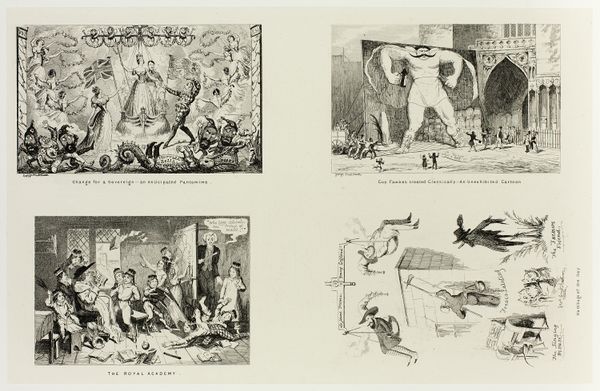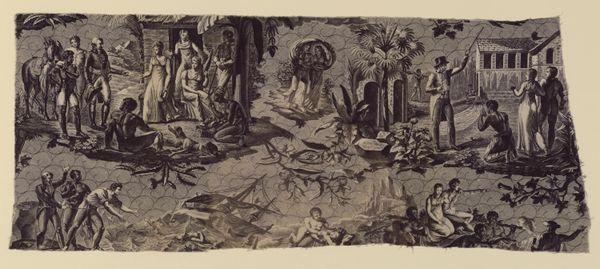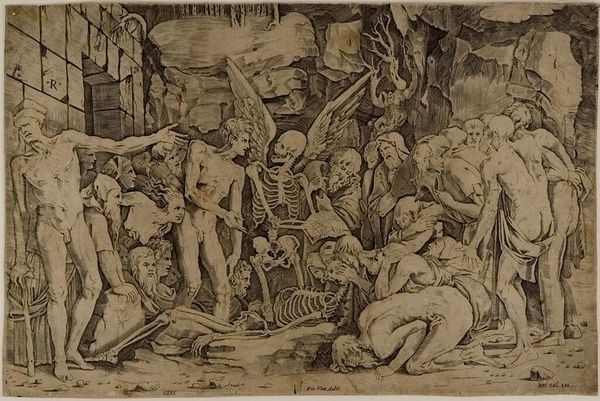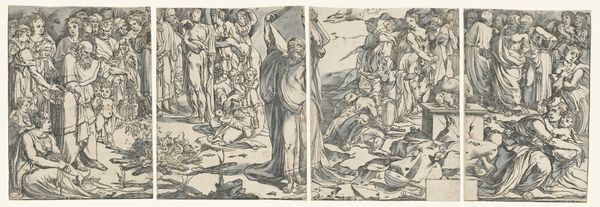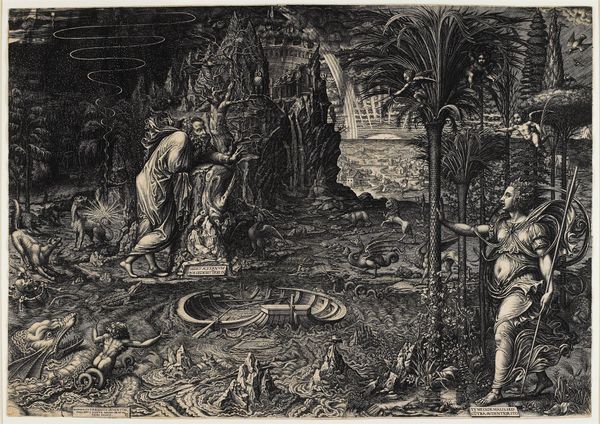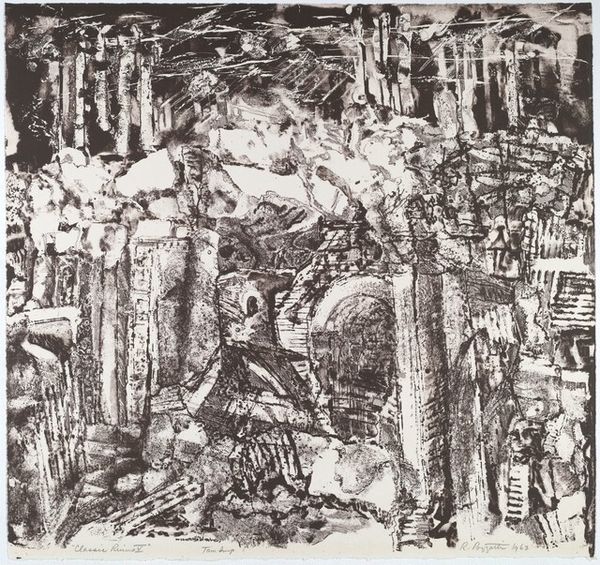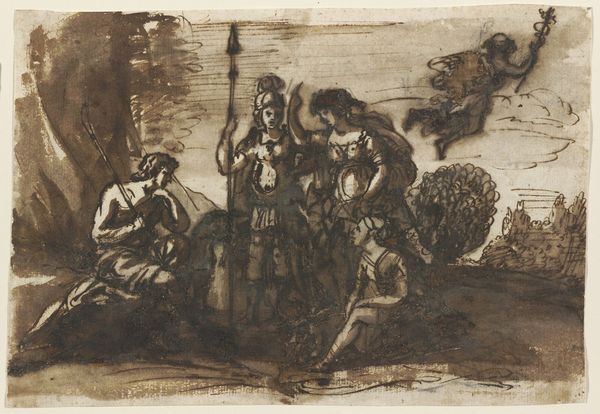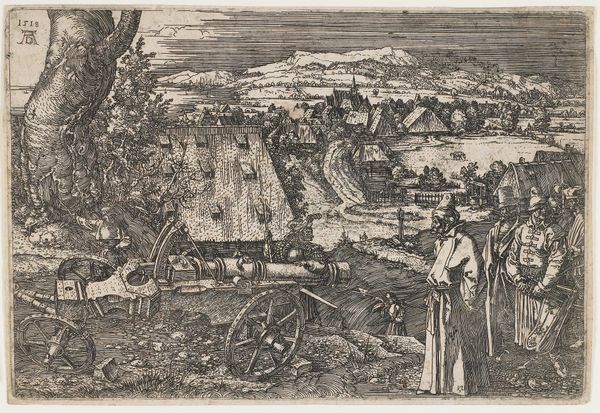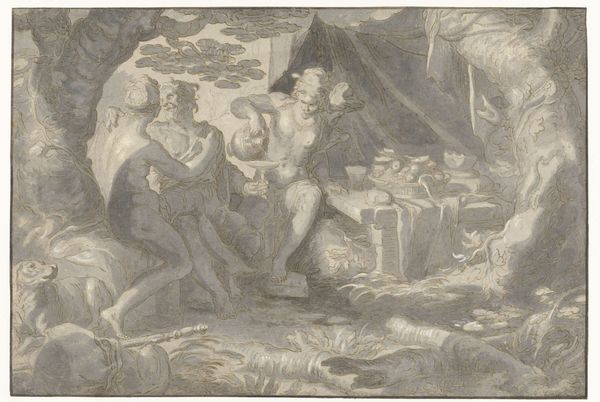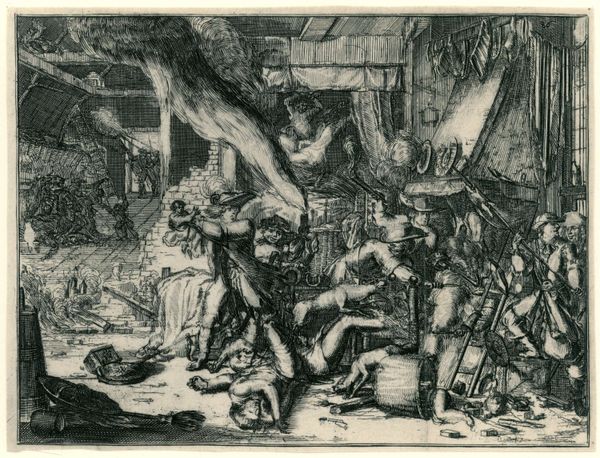
Dimensions: 86 x 50 cm
Copyright: Public domain
Editor: Here we have the "Hermit Saints Triptych," created around 1505 by Hieronymus Bosch, using oil paint on panel. The panels depict, well, hermits in rather surreal landscapes, with all sorts of strange goings-on around them. How do you even begin to unpack something like this? Curator: I think it's essential to focus on Bosch's choices regarding materials and production. Why oil on panel? What did that allow him to achieve? Look at the way he builds up layers of paint to create those unsettling textures. The materiality is inseparable from the message. This was not some divine spark; the labor here, the choices of pigment, ground, and support… they speak to a conscious artistic endeavor. Editor: That's a great point. I tend to get lost in the symbolism but thinking about the materials brings it down to earth. The oil paint would have been expensive, right? What does that tell us about who this was made *for*? Curator: Exactly! Patronage is paramount. And let's consider the panel itself. It’s a relatively portable object. Who would be commissioning and consuming this triptych? Where might it have been displayed and used? Was this ‘high art’ in the modern sense? Or did it have a different function within a domestic or devotional setting, blurring the line between art and craft object? Furthermore, what does its existence in a ducal collection now say about our changed social relationships with material things? Editor: It's interesting how grounding the analysis in materials actually opens up all these different avenues for interpretation about status and usage. I usually skip over that stuff. Curator: Material analysis invites these very sorts of socio-historical questions! How available and what was the price of oil, versus tempura? The work of the artisan is never neutral. The marketplace shapes what you see as much as Bosch's imagination. Editor: Okay, I am going to have to rethink my whole approach to Renaissance art now. Thanks! Curator: My pleasure. Always start with what’s in front of you. Then think about the hands that made it.
Comments
No comments
Be the first to comment and join the conversation on the ultimate creative platform.
